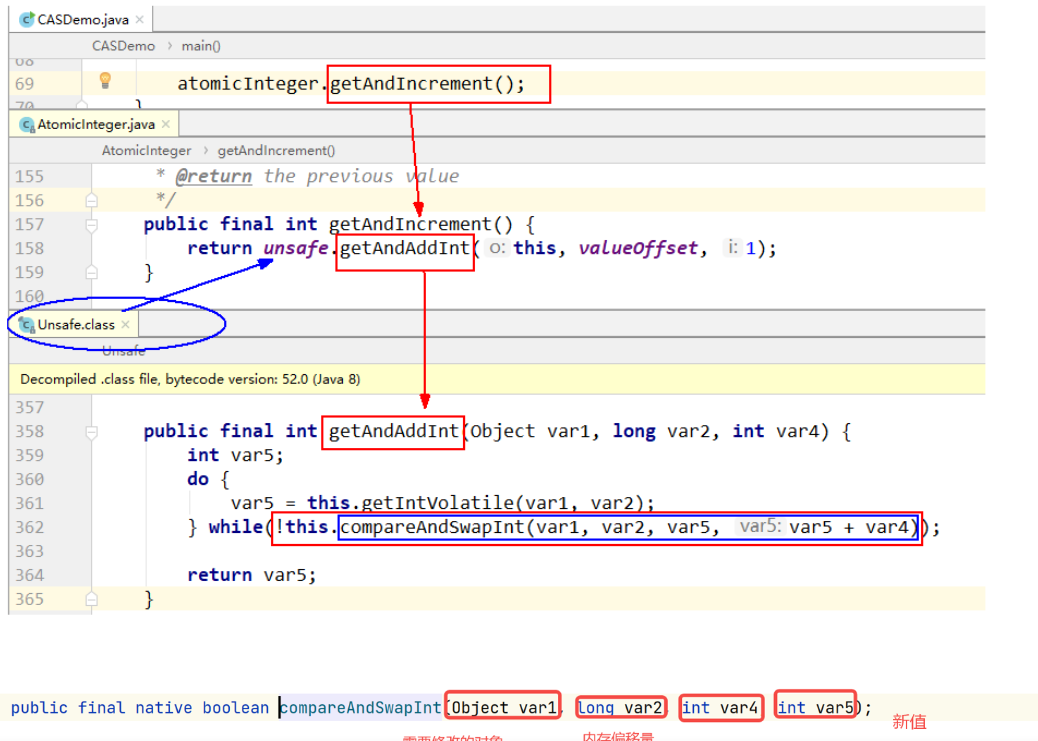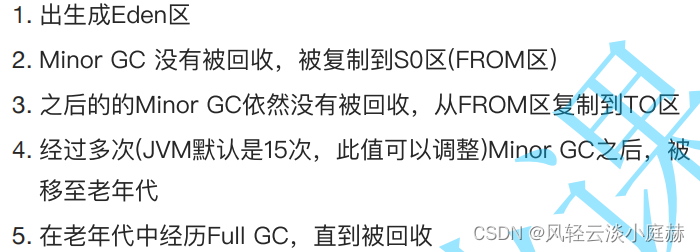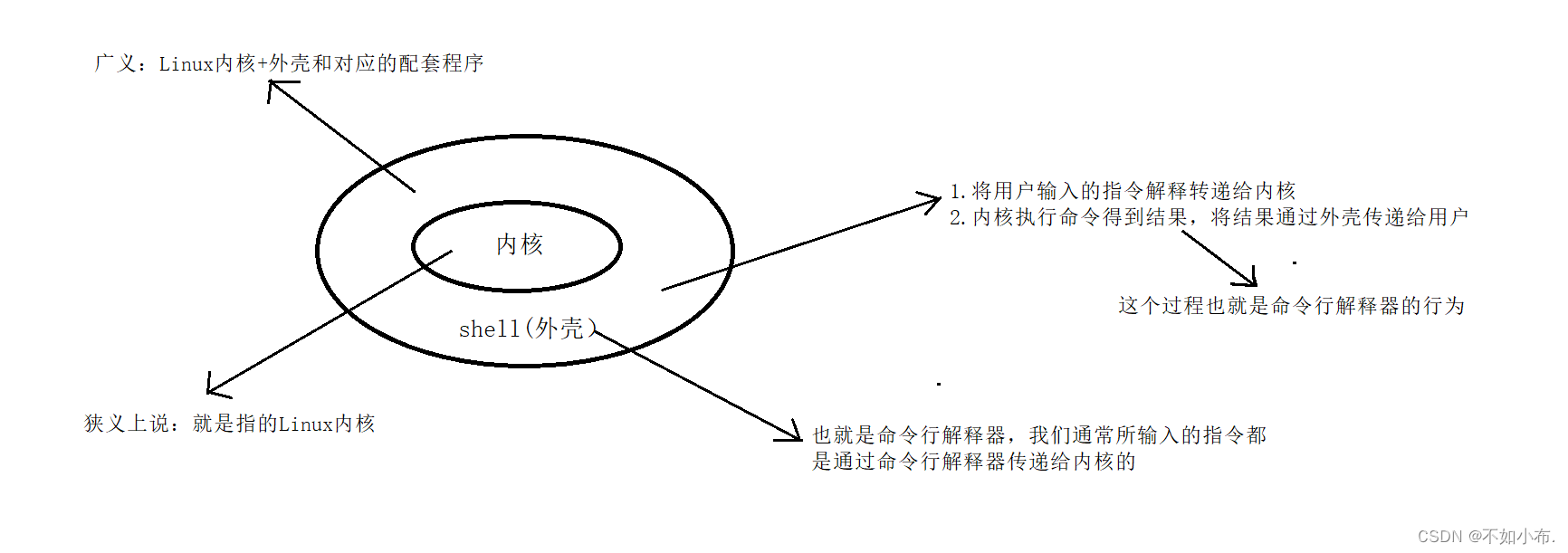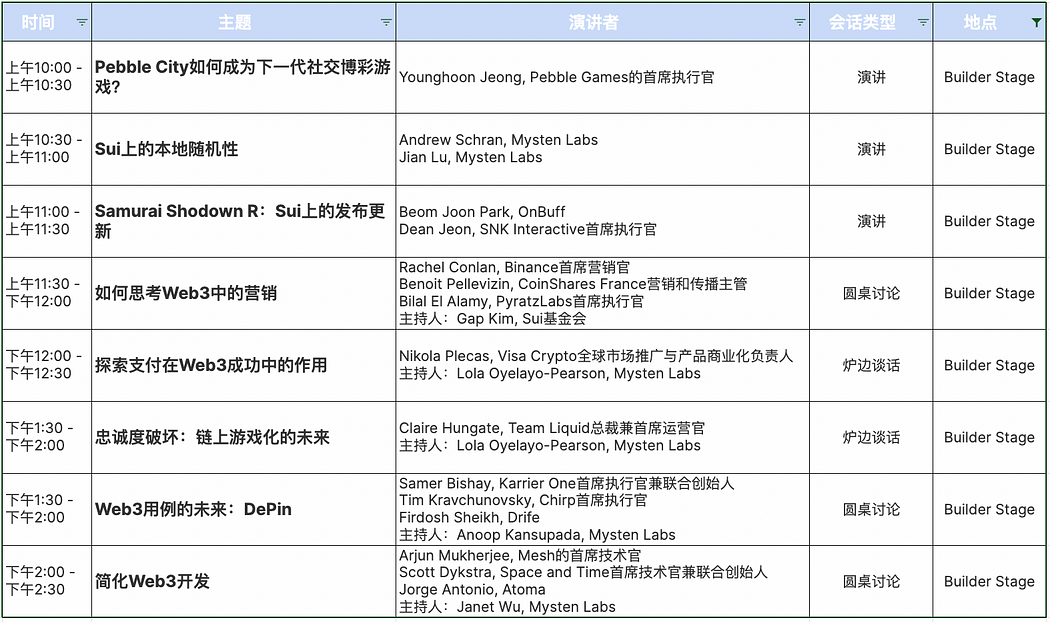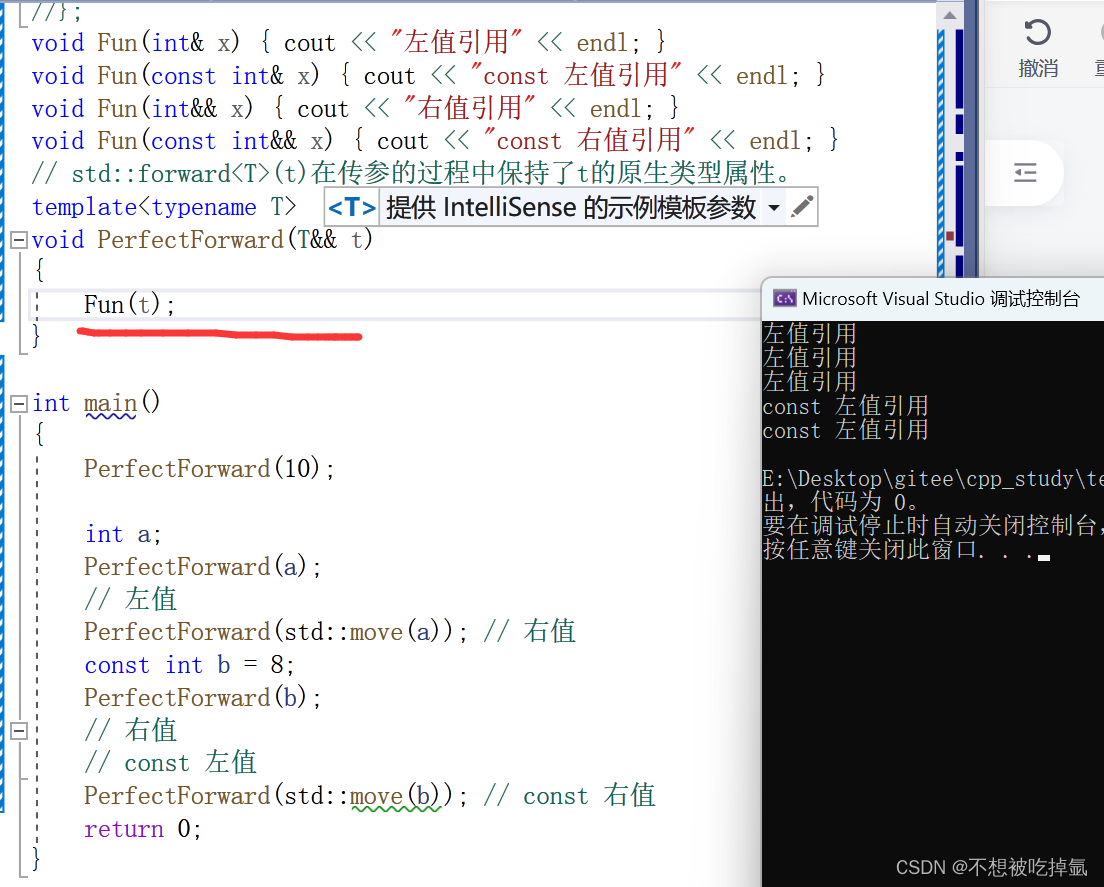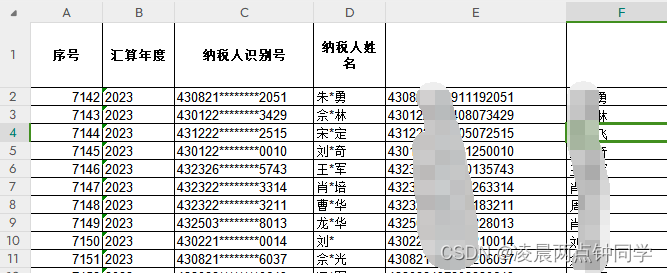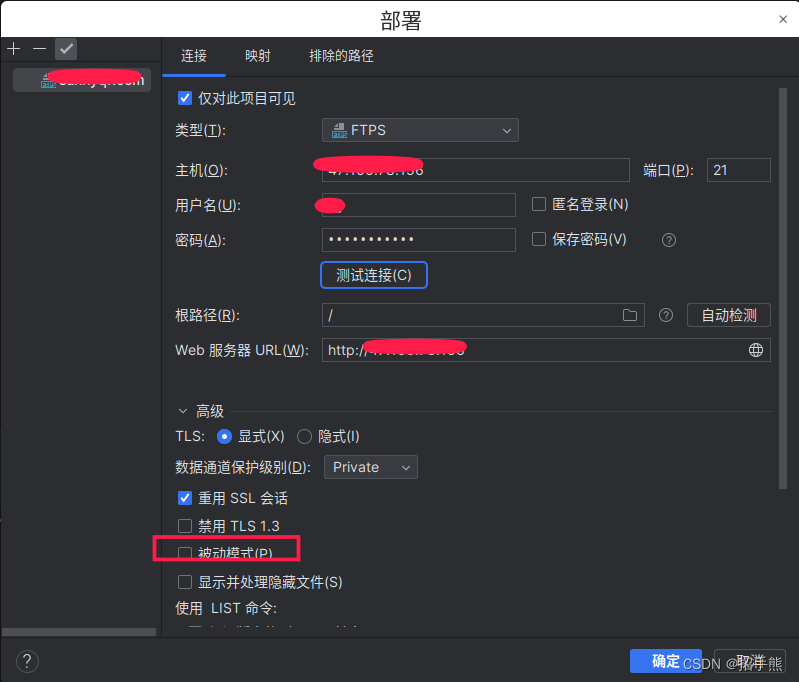1,原理
通过雅可比旋转,对对称矩阵计算特征值和特征向量;
通过初等正交变换,每次把其中一个非主对角元素消成零,最终只剩主对角线非零元素为特征值,同时把初等变换累积下来,构成特征向量。
2,源码
yevj.cpp
计算一个512 阶的矩阵的特征值和特征向量:
#include <hip/hip_runtime.h>
#include <hipsolver/hipsolver.h>#include <iostream>
#include <random>
#include <vector>
#include <functional>
#include <sstream>
#include <stdexcept>
#include <string>#define NA 512
#define PR_D 0constexpr int error_exit_code = -1;inline int report_validation_result(int errors)
{if(errors){std::cout << "Validation failed. Errors: " << errors << std::endl;return error_exit_code;}std::cout << "Validation passed." << std::endl;return 0;
}template<typename T>
void multiply_matrices(T alpha,T beta,int m,int n,int k,const T* A,int stride1_a,int stride2_a,const T* B,int stride1_b,int stride2_b,T* C,int stride_c)
{for(int i1 = 0; i1 < m; ++i1){for(int i2 = 0; i2 < n; ++i2){T t = T(0.0);for(int i3 = 0; i3 < k; ++i3){t += A[i1 * stride1_a + i3 * stride2_a] * B[i3 * stride1_b + i2 * stride2_b];}C[i1 + i2 * stride_c] = beta * C[i1 + i2 * stride_c] + alpha * t;}}
}template<class BidirectionalIterator>
inline std::string format_range(const BidirectionalIterator begin, const BidirectionalIterator end)
{std::stringstream sstream;sstream << "[ ";for(auto it = begin; it != end; ++it){sstream << *it;if(it != std::prev(end)){sstream << ", ";}}sstream << " ]";return sstream.str();
}inline const char* hipsolverStatusToString(hipsolverStatus_t status)
{switch(status){case HIPSOLVER_STATUS_SUCCESS: return "HIPSOLVER_STATUS_SUCCESS";case HIPSOLVER_STATUS_NOT_INITIALIZED: return "HIPSOLVER_STATUS_NOT_INITIALIZED";case HIPSOLVER_STATUS_ALLOC_FAILED: return "HIPSOLVER_STATUS_ALLOC_FAILED";case HIPSOLVER_STATUS_INVALID_VALUE: return "HIPSOLVER_STATUS_INVALID_VALUE";case HIPSOLVER_STATUS_MAPPING_ERROR: return "HIPSOLVER_STATUS_MAPPING_ERROR";case HIPSOLVER_STATUS_EXECUTION_FAILED: return "HIPSOLVER_STATUS_EXECUTION_FAILED";case HIPSOLVER_STATUS_INTERNAL_ERROR: return "HIPSOLVER_STATUS_INTERNAL_ERROR";case HIPSOLVER_STATUS_NOT_SUPPORTED: return "HIPSOLVER_STATUS_NOT_SUPPORTED";case HIPSOLVER_STATUS_ARCH_MISMATCH: return "HIPSOLVER_STATUS_ARCH_MISMATCH";case HIPSOLVER_STATUS_HANDLE_IS_NULLPTR: return "HIPSOLVER_STATUS_HANDLE_IS_NULLPTR";case HIPSOLVER_STATUS_INVALID_ENUM: return "HIPSOLVER_STATUS_INVALID_ENUM";case HIPSOLVER_STATUS_UNKNOWN: return "HIPSOLVER_STATUS_UNKNOWN";
#if (hipsolverVersionMajor == 1 && hipsolverVersionMinor >= 8) || hipsolverVersionMajor >= 2case HIPSOLVER_STATUS_ZERO_PIVOT: return "HIPSOLVER_STATUS_ZERO_PIVOT";
#endif}// We don't use default so that the compiler warns if any valid enums are missing from the// switch. If the value is not a valid hipsolverStatus_t, we return the following.return "<undefined hipsolverStatus_t value>";
}#define HIP_CHECK(condition) \{ \const hipError_t error = condition; \if(error != hipSuccess) \{ \std::cerr << "An error encountered: \"" << hipGetErrorString(error) << "\" at " \<< __FILE__ << ':' << __LINE__ << std::endl; \std::exit(error_exit_code); \} \}#define HIPSOLVER_CHECK(condition) \{ \const hipsolverStatus_t status = condition; \if(status != HIPSOLVER_STATUS_SUCCESS) \{ \std::cerr << "hipSOLVER error encountered: \"" << hipsolverStatusToString(status) \<< "\" at " << __FILE__ << ':' << __LINE__ << std::endl; \std::exit(error_exit_code); \} \}void init_matrix(std::vector<double> &A, int n, int lda)
{std::default_random_engine generator;std::uniform_real_distribution<double> distribution(0., 2.);auto random_number = std::bind(distribution, generator);for(int i = 0; i < n; i++){A[(lda + 1) * i] = random_number();for(int j = 0; j < i; j++){A[i * lda + j] = A[j * lda + i] = random_number();}}
}int main(const int argc, char* argv[])
{int n = NA;if(n <= 0){std::cout << "Value of 'n' should be greater than 0" << std::endl;return 0;}const int lda = n;// 2. Data vectorsstd::vector<double> A(n * lda); // Input matrixstd::vector<double> V(n * lda); // Resulting eigenvectorsstd::vector<double> W(n); // resulting eigenvalues// 3. Generate a random symmetric matrixinit_matrix(A, n, lda);// 4. Set hipsolver parametersconst hipsolverEigMode_t jobz = HIPSOLVER_EIG_MODE_VECTOR;const hipsolverFillMode_t uplo = HIPSOLVER_FILL_MODE_LOWER;hipsolverSyevjInfo_t params;HIPSOLVER_CHECK(hipsolverCreateSyevjInfo(¶ms));HIPSOLVER_CHECK(hipsolverXsyevjSetMaxSweeps(params, 100));HIPSOLVER_CHECK(hipsolverXsyevjSetTolerance(params, 1.e-7));HIPSOLVER_CHECK(hipsolverXsyevjSetSortEig(params, 1));// 5. Reserve and copy data to devicedouble* d_A = nullptr;double* d_W = nullptr;int* d_info = nullptr;HIP_CHECK(hipMalloc(&d_A, sizeof(double) * A.size()));HIP_CHECK(hipMalloc(&d_W, sizeof(double) * W.size()));HIP_CHECK(hipMalloc(&d_info, sizeof(int)));HIP_CHECK(hipMemcpy(d_A, A.data(), sizeof(double) * A.size(), hipMemcpyHostToDevice));// 6. Initialize hipsolverhipsolverHandle_t hipsolver_handle;HIPSOLVER_CHECK(hipsolverCreate(&hipsolver_handle));// 7. Get and reserve the working space on device.int lwork = 0;double* d_work = nullptr;HIPSOLVER_CHECK(hipsolverDsyevj_bufferSize(hipsolver_handle, jobz, uplo, n, d_A, lda, d_W, &lwork, params));std::cout<< "LL:: 1 lwork = "<<lwork<<"bytes"<<std::endl;lwork += 64;
// lwork = ((lwork+64-1)/64)*64;std::cout<< "LL:: 2 lwork = "<<lwork<<"bytes"<<std::endl;HIP_CHECK(hipMalloc(&d_work, sizeof(double) * lwork));// 8. Compute eigenvectors and eigenvaluesHIPSOLVER_CHECK(hipsolverDsyevj(hipsolver_handle,jobz,uplo,n,d_A,lda,d_W,d_work,lwork,d_info,params));// 9. Get results from host.int info = 0;HIP_CHECK(hipMemcpy(V.data(), d_A, sizeof(double) * V.size(), hipMemcpyDeviceToHost));HIP_CHECK(hipMemcpy(W.data(), d_W, sizeof(double) * W.size(), hipMemcpyDeviceToHost));HIP_CHECK(hipMemcpy(&info, d_info, sizeof(int), hipMemcpyDeviceToHost));// 10. Print resultsif(info == 0){std::cout << "SYEVJ converges." << std::endl;}else if(info > 0){std::cout << "SYEVJ does not converge (" << info << " elements did not converge)."<< std::endl;}std::cout << "\nGiven the n x n square input matrix A; we computed the linearly independent ""eigenvectors V and the associated eigenvalues W."<< std::endl;
#if PR_Dstd::cout << "A = " << format_range(A.begin(), A.end()) << std::endl;std::cout << "W = " << format_range(W.begin(), W.end()) << std::endl;std::cout << "V = " << format_range(V.begin(), V.end()) << std::endl;
#endifint sweeps = 0;double residual = 0;HIPSOLVER_CHECK(hipsolverXsyevjGetSweeps(hipsolver_handle, params, &sweeps));HIPSOLVER_CHECK(hipsolverXsyevjGetResidual(hipsolver_handle, params, &residual));std::cout << "\nWhich was computed in " << sweeps << " sweeps, with a residual of " << residual<< std::endl;// 11. Validate that 'AV == VD' and that 'AV - VD == 0'.std::cout << "\nLet D be the diagonal constructed from W.\n"<< "The right multiplication of A * V should result in V * D [AV == VD]:"<< std::endl;// Right multiplication of the input matrix with the eigenvectors.std::vector<double> AV(n * lda);multiply_matrices(1.0, 0.0, n, n, n, A.data(), lda, 1, V.data(), 1, lda, AV.data(), lda);
#if PR_Dstd::cout << "AV = " << format_range(AV.begin(), AV.end()) << std::endl;
#endif// Construct the diagonal D from eigenvalues W.std::vector<double> D(n * n);for(int i = 0; i < n; i++){D[(n + 1) * i] = W[i];}// Scale eigenvectors V with W by multiplying V with D.std::vector<double> VD(n * lda);multiply_matrices(1.0, 0.0, n, n, n, V.data(), 1, lda, D.data(), lda, 1, VD.data(), lda);
#if PR_Dstd::cout << "VD = " << format_range(VD.begin(), VD.end()) << std::endl;
#endifdouble epsilon = 1.0e5 * std::numeric_limits<double>::epsilon();int errors = 0;double mse = 0;for(int i = 0; i < n * n; i++){double diff = (AV[i] - VD[i]);diff *= diff;mse += diff;errors += (diff > epsilon);}mse /= n * n;std::cout << "\nMean Square Error of [AV == VD]:\n " << mse << std::endl;// 12. Clean up device allocations.HIPSOLVER_CHECK(hipsolverDestroy(hipsolver_handle));HIPSOLVER_CHECK(hipsolverDestroySyevjInfo(params));HIP_CHECK(hipFree(d_A));HIP_CHECK(hipFree(d_W));HIP_CHECK(hipFree(d_work));HIP_CHECK(hipFree(d_info));return report_validation_result(errors);
}
第一种 Makefile:
使用g++ 编译
SRC := hipsolver_Dsyevj.cppEXE := hipsolver_Dsyevjall: $(EXE)INC := -I/opt/rocm/include
LD_FLAGS := -L/opt/rocm/lib -lamdhip64 -lrocblas -lhipsolver -lrocsolver -D__HIP_PLATFORM_AMD__%: %.cppg++ $< -o $@ $(INC) $(LD_FLAGS).PHONY: clean
clean:rm -rf $(EXE)第二种 Makefile:
使用hipcc编译
EXAMPLE := hipsolver_syevj
COMMON_INCLUDE_DIR := ./Common
GPU_RUNTIME := HIP# HIP variables
ROCM_INSTALL_DIR := /opt/rocm
CUDA_INSTALL_DIR := /usr/local/cudaHIP_INCLUDE_DIR := $(ROCM_INSTALL_DIR)/include
HIPSOLVER_INCLUDE_DIR := $(HIP_INCLUDE_DIR)HIPCXX ?= $(ROCM_INSTALL_DIR)/bin/hipcc
CUDACXX ?= $(CUDA_INSTALL_DIR)/bin/nvcc# Common variables and flags
CXX_STD := c++17
ICXXFLAGS := -std=$(CXX_STD)
ICPPFLAGS := -isystem $(HIPSOLVER_INCLUDE_DIR) -I $(COMMON_INCLUDE_DIR)
ILDFLAGS := -L $(ROCM_INSTALL_DIR)/lib
ILDLIBS := -lhipsolverifeq ($(GPU_RUNTIME), CUDA)CXXFLAGS += -x cuCPPFLAGS += -D__HIP_PLATFORM_NVIDIA__COMPILER := $(CUDACXX)
else ifeq ($(GPU_RUNTIME), HIP)CXXFLAGS ?= -Wall -WextraCPPFLAGS += -D__HIP_PLATFORM_AMD__COMPILER := $(HIPCXX)
else$(error GPU_RUNTIME is set to "$(GPU_RUNTIME)". GPU_RUNTIME must be either CUDA or HIP)
endifICXXFLAGS += $(CXXFLAGS)
ICPPFLAGS += $(CPPFLAGS)
ILDFLAGS += $(LDFLAGS)
ILDLIBS += $(LDLIBS)$(EXAMPLE): hipsolver_Dsyevj.cpp$(COMPILER) -g $(ICXXFLAGS) $(ICPPFLAGS) $(ILDFLAGS) -o $@ $< $(ILDLIBS)clean:$(RM) $(EXAMPLE).PHONY: clean
3,编译运行
make
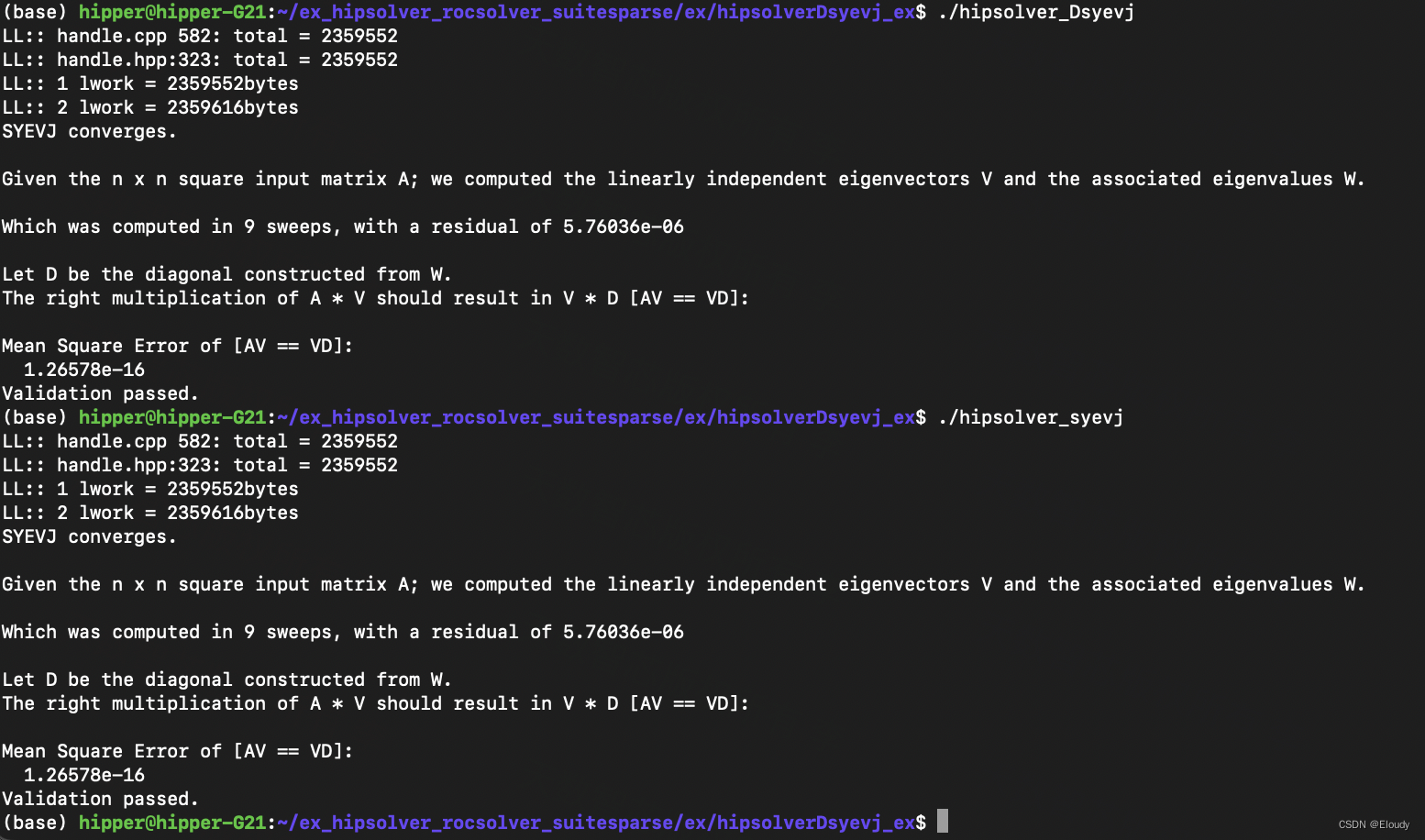
4,提炼出来了
git@github.com:Kleenelan/yevj_batched_little_rocm.git
5, 参考
GitHub - amd/rocm-examples
结束
